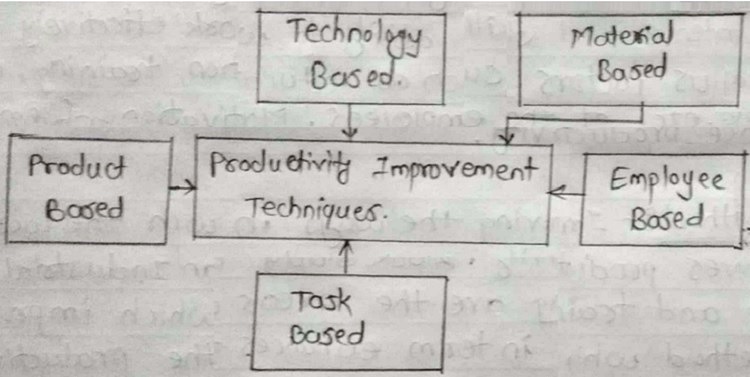
Essay on Productivity (Business Management, Production Management, Industrial Engineering).
What is Productivity
Productivity is the function of providing more and more of everything to more and more people with less and less consumption of resources. The volume of output attained in a given period of time in relation to the sum of the direct and indirect efforts expend in its production.
GET INSTANT HELP FROM EXPERTS!
- Looking for any kind of help on your academic work (essay, assignment, project)?
- Want us to review, proofread or tidy up your work?
- Want a helping hand so that you can focus on the more important tasks?
Hire us as project guide/assistant. Contact us for more information
Productivity is the measure of how well the resources are brought together in an organisation and utilised for accomplishing a set of objectives. Productivity is concerned with establishing congruency between organisational goals with societal aspirations through I/P – O/P relationship. Productivity is the multiplier effect of efficiency & effectiveness
Productivity Measures
1) Partial Productivity Measures (PPM):
Depending upon the individual I/P partial productivity measures are expressed as:
Partial Productivity = Total Output / Partial Input
Labour Productivity = Total Output / Labour Input
Labour Input is measured in terms on man-hours.
Capital Productivity = Total Output / Capital Input
Material Productivity = Total Output / Material Input
Energy Productivity = Total Output / Energy Input
2) Total Productivity Measures (TPM):
It is based on all the inputs. This model can be applied to any manufacturing organisation or service company.
Total Productivity = Total Tangible O/P / Total Tangible I/P
Total Tangible Output = Value of finished goods produced + Value of partial units produced + dividends from securities + interests + other income.
Total Tangible Input = Value of (Human + Material + Capital + Energy + Other I/P) used.
Deflator = Current Year Price/Base Year Price
Features of TPM:
- Gives both firm level and detailed unit level index.
- Helps to find out the performance and productivity of the operational unit.
- Helps to plan, evaluate and control
- An important function to strategic planners regarding expansion or phasing out decisions
GET INSTANT HELP FROM EXPERTS!
- Looking for any kind of help on your academic work (essay, assignment, project)?
- Want us to review, proofread or tidy up your work?
- Want a helping hand so that you can focus on the more important tasks?
Hire us as project guide/assistant. Contact us for more information
3) Total Factor Productivity Measures (TFP):
It is ratio of net output to the labour & capital input.
Total Factor Productivity = Net Output / (Labour + Capital Inputs)
Factors influencing productivity can be classified broadly into two categories: controllable (internal factors) and Non-controllable (or external factors).
- Examples of controllable factors: Product, plant & equipment, technology, materials, human factors, work methods, management style, financial factors, sociological factors.
- Examples of Uncontrollable factors: Structural adjustments, natural resources, government policy, infrastructure.
Productivity Improvement Techniques
- Technology based: Computer Aided Design (CAD), Computer Aided Manufacturing (CAM), and Computer Integrated Manufacturing (CIM)
Robotics
Laser Technology
Modern Maintenance Techniques
Energy Technology
Flexible Manufacturing Systems (FMS) - Employee Based
Finacial and non-financial activities at individual & group level
Employee Promotion
Worker particpation in decision-making
Quality circles (QC), small group activities (SGA)
Personal Development - Material Based
Material Panning & control
Purchasing Logistics
Material Storage & Retrieval
Source Selection & procurement of quality material
Waste elimination - Process Based
Methods Engineering and work simplification
Job design, job evaluation, job safety
Human factors engineering - Product Based
Value Analysis & Value Engineering
Product Diversification
standardisation & simplification
Reliability engineering
Product mix and promotion - Management Based
Management cycle
communication in the organisation
Work culture
Motivation
Promoting Group activity
StudyMumbai.com is an educational resource for students, parents, and teachers, with special focus on Mumbai. Our staff includes educators with several years of experience. Our mission is to simplify learning and to provide free education. Read more about us.

Leave a Reply
You must be logged in to post a comment.